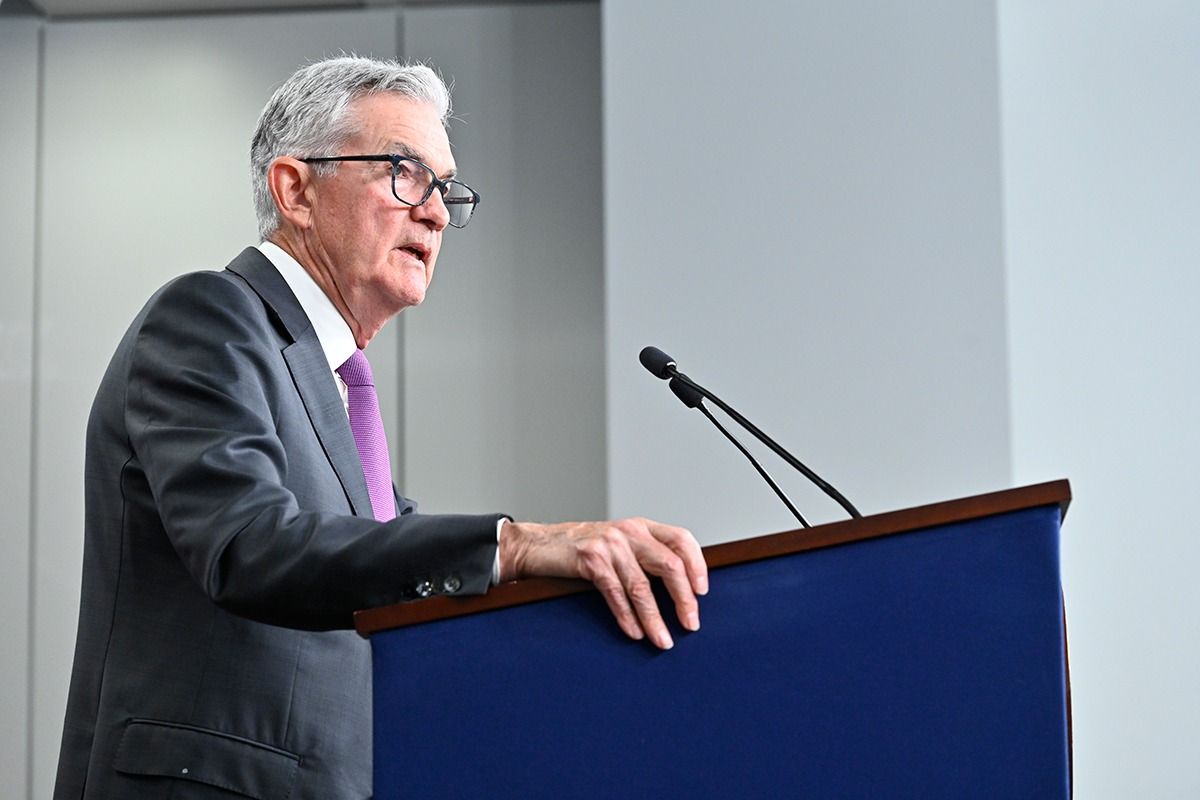Powell speech to offer clues on Fed interest rate path


Federal Reserve Chairman Jerome Powell participates on Monday in a moderated discussion titled "A View from the Federal Reserve Board" at the National Association for Business Economics Annual Meeting in Nashville, starting at 17:00 GMT. Powell is expected to speak on the economic outlook and comment on the monetary policy path.
Fed rate outlook remains uncertain
The Fed opted for a 50 basis points (bps) interest-rate cut following the September policy meeting, bringing the fed funds rate to the range of 4.75%-5.0%. The revised Summary of Economic Projections (SEP), the so called dot-plot published alongside the policy statement, showed that projections imply 50 bps of additional rate cuts in 2024 from current level, 100 bps more in 2025 and another 50 bps in 2026.
The CME FedWatch Tool shows that markets are currently pricing in a nearly 50% probability of another 50 bps rate reduction at the next policy meeting in early November. On Friday, the US Bureau of Economic Analysis reported that the core Personal Consumption Expenditures (PCE) Price Index rose 0.1% on a monthly basis in August, at a softer pace than the market expectation of 0.2%.
Fed policymakers spoke on the policy outlook recently and their remarks painted a mixed picture. Fed Governor Michelle Bowman, who is also set to speak again at 12:50 GMT, noted that she prefers a more measured re-calibration of policy and added that she continues to see greater risks to price stability. On a dovish note, Chicago Fed President Austan Goolsbee argued that interest rates need to come down significantly and said that "many more rate cuts" are likely needed over the next year.
Related news
- Fed’s Musalem: Central bank should cut US interest rates ‘gradually
- The Fed’s vindicated by PCE data, as US stocks set to hit another record
- Fed policymakers shed light on inflation and interest rate outlook
Fed FAQs
What does the Federal Reserve do, how does it impact the US Dollar?
Monetary policy in the US is shaped by the Federal Reserve (Fed). The Fed has two mandates: to achieve price stability and foster full employment. Its primary tool to achieve these goals is by adjusting interest rates. When prices are rising too quickly and inflation is above the Fed’s 2% target, it raises interest rates, increasing borrowing costs throughout the economy. This results in a stronger US Dollar (USD) as it makes the US a more attractive place for international investors to park their money. When inflation falls below 2% or the Unemployment Rate is too high, the Fed may lower interest rates to encourage borrowing, which weighs on the Greenback.
How often does the Fed hold monetary policy meetings?
The Federal Reserve (Fed) holds eight policy meetings a year, where the Federal Open Market Committee (FOMC) assesses economic conditions and makes monetary policy decisions. The FOMC is attended by twelve Fed officials – the seven members of the Board of Governors, the president of the Federal Reserve Bank of New York, and four of the remaining eleven regional Reserve Bank presidents, who serve one-year terms on a rotating basis.
What is Quantitative Easing (QE) and how does it impact USD?
In extreme situations, the Federal Reserve may resort to a policy named Quantitative Easing (QE). QE is the process by which the Fed substantially increases the flow of credit in a stuck financial system. It is a non-standard policy measure used during crises or when inflation is extremely low. It was the Fed’s weapon of choice during the Great Financial Crisis in 2008. It involves the Fed printing more Dollars and using them to buy high grade bonds from financial institutions. QE usually weakens the US Dollar.
What is Quantitative Tightening (QT) and how does it impact the US Dollar?
Quantitative tightening (QT) is the reverse process of QE, whereby the Federal Reserve stops buying bonds from financial institutions and does not reinvest the principal from the bonds it holds maturing, to purchase new bonds. It is usually positive for the value of the US Dollar.







